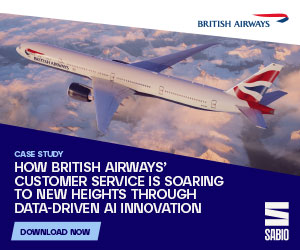Andrea Matsuda at NICE explores how to elevate the employee experience during an economic downturn.
Is a Recession on the Horizon? Are We in a Recession Now?
Economists don’t fully agree, but here’s what really matters: An overwhelming majority of CEOs—93%—say they are preparing for a U.S. recession. Consensus among economists aside, an attitude of recessionary safeguarding reigns supreme.
Yet safeguarding measures, including layoffs and hiring freezes, carry their own costs. And while asking existing employees to do more with less may cut costs in the short term, the downstream tax on employee and customer experiences could be crippling.
Already, contact centres are grappling with record rates of turnover and “quiet quitting,” when employees show up at work but do nothing but the bare minimum.
And it’s not hard to understand why: agents’ jobs are more complex, their workplaces are more isolated, and their customers are less patient than ever before. In fact, our research found that 41% of customers will abandon a brand after just two poor digital interactions.
In our latest eBook, Elevating the Employee Experience During and Economic Downturn, we outline the strategies for contact centre leaders looking to do more with less without paying the high tax of unhappy, disengaged employees.
We focus on two areas proven to deliver high employee experience value—performance management and flexible scheduling—and detail how contact centre leaders can optimize their systems and workforce management vendor solutions.
Doing so is statistically proven to boost employee satisfaction, even in a climate of recessionary safeguarding.
Why Performance Management? To Foster a Culture of Continuous Improvement.
Remote or hybrid workplaces are the new contact centre norm, leaving many performance managers in the dark. Productivity and engagement levels, once easily assessed on-site, have become opaque.
Moreover, in the face of surging attrition rates and workforce shortages, performance management has become, well . . . tricky: Push too hard, or in the wrong direction, and that employee could be gone.
Yet low- and mid-level managers—many of whom are burnt out, too—play an increasingly critical to role in translating and instilling company culture: Gartner found more than 60% of hybrid employees say their manager is their most direct connection to company culture.
They’re doing more nuanced, empathetic, culture-critical work with less visibility, employee patience, or resources.
Our eBook details how managers can be empowered to do more with less—with better outcomes and less burn out—with precise, dynamic, captured-from-anywhere insights that improve the quality and impact of coaching activities, and foster a culture of continuous improvement, not one of continuous “quiet quitting.”
Why Flexible Scheduling? To Improve Employee Engagement and Retention.
Contact centre agents have spoken, and 47% report that they want flexible scheduling with 24/7 access.
Agents who can’t get the schedule they want, have to wait hours or days for a schedule change approval, or miss an opportunity for time off or overtime are unhappy agents. And unhappy agents cost contact centres money: manual intraday schedule management, absenteeism, reduced engagement, and decreased employee retention are all significant barriers to doing more with less.
In our eBook we’ll outline how to manage multi-skilled, multi-channel employees; grow agent accountability; forecast with greater precision; immediately respond to intraday “what ifs”; and gamify scheduling.
Fueled by AI-enabled systems and next generation WFM solutions, contact centre leaders can adopt flexible scheduling processes that improve the employee experience and grow business value—fast.
Tap Into Your Greatest Competitive Differentiator: The Employee Experience
When, and to what degree, a global recession may hit is up for debate. What’s not is the link between superior employee experience and a contact center’s ability to do more with less in the future of work.
By harnessing an automated, AI-driven WFM solution, contact centers can empower their employees to build their own success and their own version of work-life balance.
And as our eBook details, it can be done in ways that pay dividends in the form of differentiated customer experiences, improved employee engagement, continuous performance improvement, and enhanced retention rates.
This blog post has been re-published by kind permission of NiCE-ltd – View the Original Article
For more information about NiCE-ltd - visit the NiCE-ltd Website
Call Centre Helper is not responsible for the content of these guest blog posts. The opinions expressed in this article are those of the author, and do not necessarily reflect those of Call Centre Helper.
Author: NiCE-ltd
Published On: 16th May 2023 - Last modified: 6th Sep 2024
Read more about - Guest Blogs, Andrea Matsuda, NiCE






 NiCE (NASDAQ: NICE) is transforming the world with AI that puts people first. Our purpose-built AI-powered platforms automate engagements into proactive, safe, intelligent actions, empowering individuals and organizations to innovate and act, from interaction to resolution. Trusted by organizations throughout 150+ countries worldwide, NiCE’s platforms are widely adopted across industries connecting people, systems, and workflows to work smarter at scale, elevating performance across the organization, delivering proven measurable outcomes.
NiCE (NASDAQ: NICE) is transforming the world with AI that puts people first. Our purpose-built AI-powered platforms automate engagements into proactive, safe, intelligent actions, empowering individuals and organizations to innovate and act, from interaction to resolution. Trusted by organizations throughout 150+ countries worldwide, NiCE’s platforms are widely adopted across industries connecting people, systems, and workflows to work smarter at scale, elevating performance across the organization, delivering proven measurable outcomes. 































